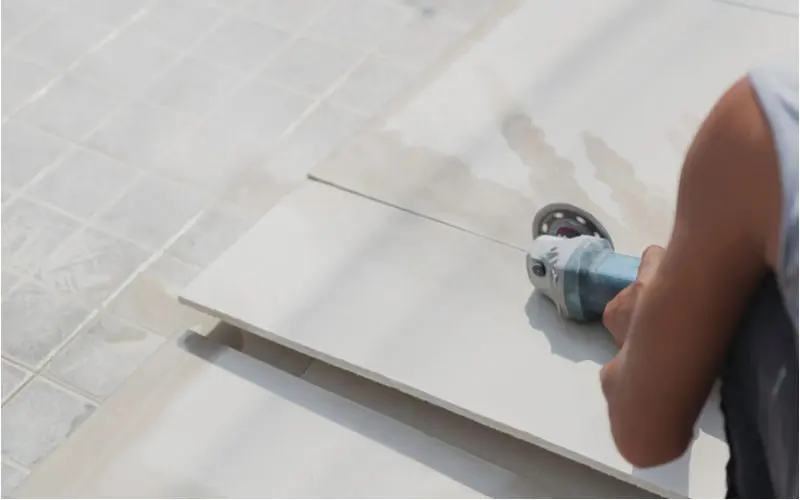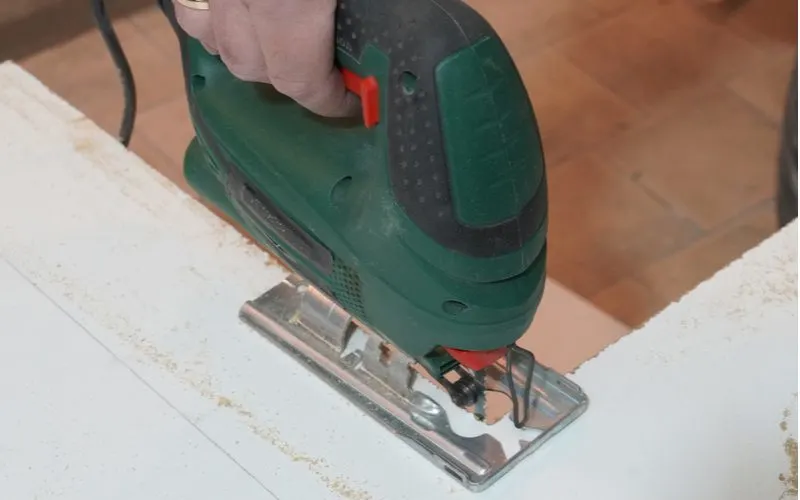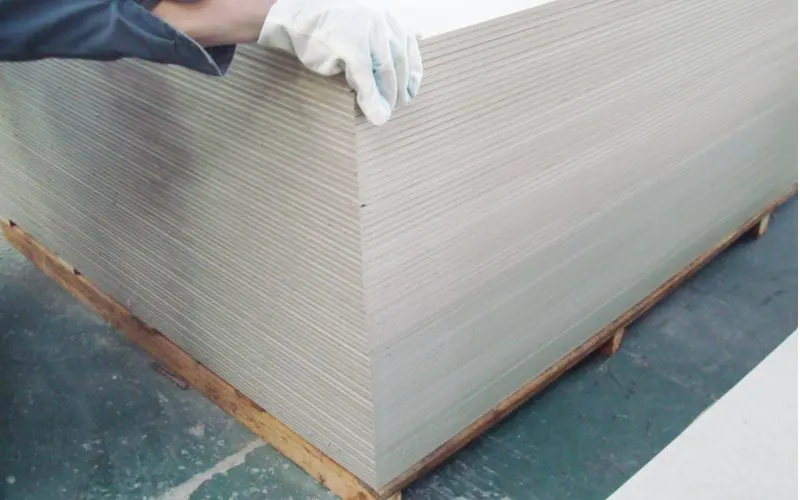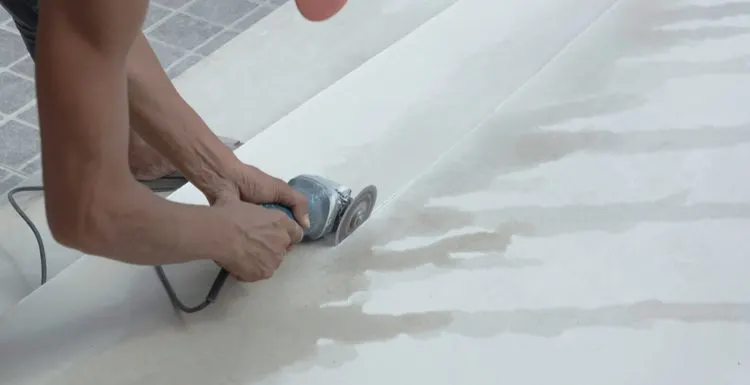While you can cut cement boards using a variety of methods, we’ll cover the two most popular: using a circular saw and using a jigsaw.
Circular saws are mostly used for cutting straight lines, while jigsaws are used to cut circular or irregular shapes.
How to Cut Cement Board With a Circular Saw

Suwan Banjongpian/Shutterstock
Step 1: Mark the Area You Want to Cut With a Carpenter’s Pencil
Using a ruler or a straight edge, mark a visible line using a carpenter’s pencil where you’d like to cut.
Ensure you draw this line on the underside of the cement board because this is the side that will face up as you cut through the board.
Step 2: Extend the Blade Depth to ½ inch Underneath the Board
Hold the unplugged circular saw beside the cement board. Retract the blade protector. There’s a knob on the blade for the purpose of adjusting the blade depth.
Loosen that knob and adjust the blade until it extends about ½ an inch below the cutting surface, while also pivoting the saw’s base. After you have the required depth, make sure the knob is tight to secure the blade.
Step 3: With the Front-Side Down, Align the Board to the Cutting Guide of the Saw
The circular blade is designed so that the blade cuts from underneath and upwards through the board. Putting the front side down will give it a smoother-looking edge that will be more appealing.
Place the front side of the board on the sawhorse and the base of the circular saw on the board. Then, align the line you drew on the board with its cutting guide.
Step 4: Ensure Blade Is at Full Speed Before Cutting
This is one of the most important steps. Before the blade touches the cement board, make sure it is rotating at full speed. This is because cement is a hard material, and the speed of the blade is necessary to cut through it safely.
A blade at a speed that is too low will make the blade break and fly off, potentially injuring you or other people in the room while also ruining the board. Here are a few important safety tips that you should follow.
Step 5: Push the Blade Slowly and Gently into the Cement
Once the blade is safely cutting into the cement, slowly push it forward. Be mindful of any bumps.
Move slowly or stop to give the blade time to speed back up, then continue. Maintain this level of control until you finish cutting the board.
How to Cut Cement Board With a Jigsaw

Alexandr Gostev/Shutterstock
Step 1: Fit Jigsaw With Carbide-Grit Blade
Fit a carbide-grit blade onto your jigsaw blade and make sure it is firmly secured.
Step 2: Lay the Board Top-Face Upon the Sawhorse
Unlike the circular blade, the jigsaw cuts from the upper side down into the cement board.
Placing it on top, face up, helps you avoid chipping, especially when maneuvering irregular edges and circles. Make sure the cement board is firmly secured on the sawhorse.
Step 3: Mark the Board with a Pencil
Use a carpenter’s pencil to mark the lines you need to saw along to get the shape you want. This is especially important for complicated or intricate, irregular shapes and circles.
Step 4: Drill a Pilot Hole in the Cement Board
The jigsaw will need an opening to fit into, so you can start cutting. It’s easier for it to penetrate the cement board with a hole, so you’ll need to drill one using a drill and masonry bit.
If you have a shape with tight corners and many sharp twists and turns, drill a hole at the tightest corners to help the blade cut along these parts with ease.
Step 5: Insert the Sawblade into the Hole and Bring it to Full Speed
This is the same for all the different kinds of blades and methods: the blade has to be at full speed so it can use the additional force from the high velocity to cut the hard cement without breaking the blade and potentially causing injuries.
Step 6: Push the Jigsaw Gently Through the Cement
Maintain firm control, feeling for bumps and slowing of the blade, until you’ve cut through the board.
Things to Consider

Sukrita/Shutterstock
Use a carbide-tipped wood-cutting blade when using the circular saw. Carbide is a hardy material that will withstand the cement, and a wood-cutting blade has fewer teeth.
The fewer teeth will minimize the release of harmful concrete dust from the cutting board.
Regardless, ensure you always wear eye and respiratory protection gear when cutting cement boards. This fine dust is dangerous.
Avoid using a regular pencil to draw the guidelines on the cement board. Cement is hard and will dull after only a few lines. Use a carpenter’s pencil instead.
Make sure the board is firmly secured on the cutting surface before turning on the blade and starting the cutting process. If the blade jams at any point, stop and wait for it to get back up to speed before continuing to avoid injury.
Make sure both halves of the cement board are secure on the sawhorse so that neither of them will fall to the floor after you cut the board.
This could cause injuries and, at the very least, break the fallen piece. For the jigsaw, have a few extra blades close by because you may have to replace the blade after cutting through the cement board.
If you don’t have a sawhorse, that’s OK. Just make sure you can secure the cement board firmly enough for cutting and eventually hold the halves of the cement board so they don’t fall after cutting. Use a stencil or a round object for any line that isn’t straight.
When cutting irregular shapes, remember to drill holes at the tightest corners so that the jigsaw blade does not struggle to cut through them. This movement can easily break the blade.
Final Thoughts
Cutting cement board is easy, as long as you take the right steps.
Don’t skip any of these, as doing so can result in injury, or at a minimum, a broken piece of cement board.
And while you’re here, be sure to check out our other hand-made how-tos and home improvement guides. You’ll be glad you did!

